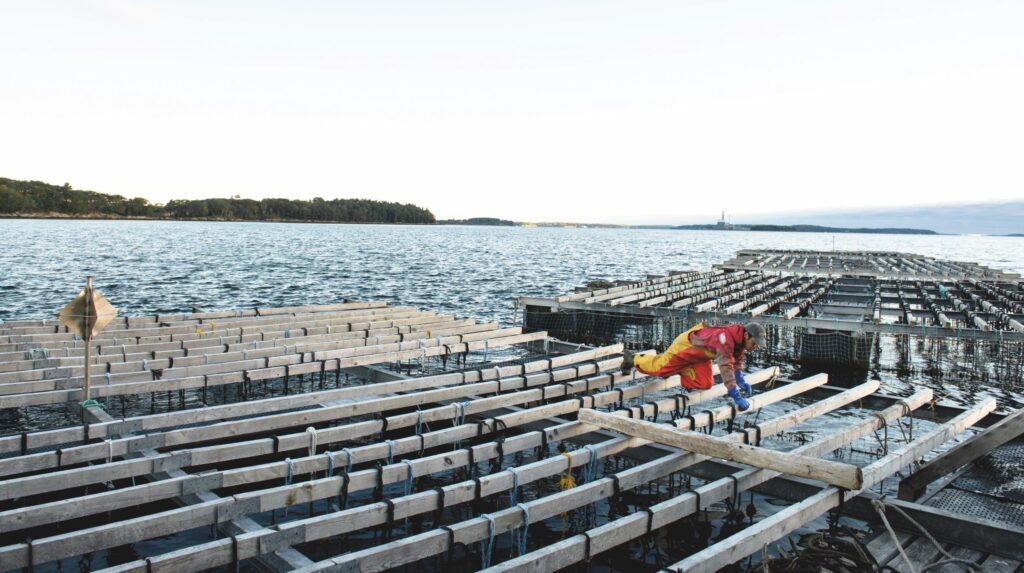Published by The Guardian on June 11, 2025.
On a glimmering May morning, Tom Briggs pilots a 45ft aluminium barge through the waters of Casco Bay for one of the final days of the annual kelp harvest. Motoring past Clapboard Island, he points to a floating wooden platform where mussels have been seeded alongside ribbons of edible seaweed.
“This is our most productive mussel site,” says Briggs, the farm manager for Bangs Island Mussels, a Portland sea farm that grows, harvests and sells hundreds of thousands of pounds of shellfish and seaweed each year. “When we come here, we get the biggest, fastest-growing mussels with the thickest shells and the best quality. To my mind, unscientifically, it’s because of the kelp.”
A growing body of science supports Briggs’s intuition. The Gulf of Maine is uniquely vulnerable to ocean acidification, which can impede shell development in mussels, clams, oysters and lobster, threatening an industry that employs hundreds of people and generates $85m to $100m (£63m to £74m) annually.
Atmospheric carbon dioxide from fossil fuels is the main driver of declining ocean pH, increasing the acidity of the world’s oceans by more than 40% since the preindustrial era and by more than 15% since 1985. Add carbon runoff from growing coastal communities, regular inflows of colder, more acidic water from Canada, and intense thermal stress – the Gulf of Maine is warming three times faster than the global average – and you’re left with a delicate marine ecosystem and key economic resource under threat.
Enter kelp. The streams of glistening, brownish-green seaweed that Bangs Island seeds on lines under frigid November skies and harvests in late spring are a natural answer to ocean acidification because they devour carbon dioxide. Sensors placed near kelp lines in Casco Bay over the past decade have shown that growing seaweed changes water chemistry enough to lower the levels of carbon dioxide in the immediate vicinity, nourishing nearby molluscs.
“We know that, in general, for shell builders, ocean acidification is bad, and we know that kelp do better in a high-CO2 environment,” says Susie Arnold, the senior ocean scientist at the Island Institute, a non-profit climate and community organisation in Rockland, Maine, and a pioneer of the Bangs Island water experiments.
Working with the Bigelow Laboratory for Ocean Sciences, an independent Maine-based research organisation, Arnold and others began testing the water off Chebeague Island in 2015 “to see if we could detect a difference between water chemistry in the middle of all that kelp and far away from it”, she says. “We planted juvenile mussels inside and outside the kelp, and we were able to show that the mussels inside the kelp had a thicker shell. Now you see Bangs Island growing kelp around their mussels because they can make a profit on kelp and also buffer the mussels.”
(You may experience a paywall.)


